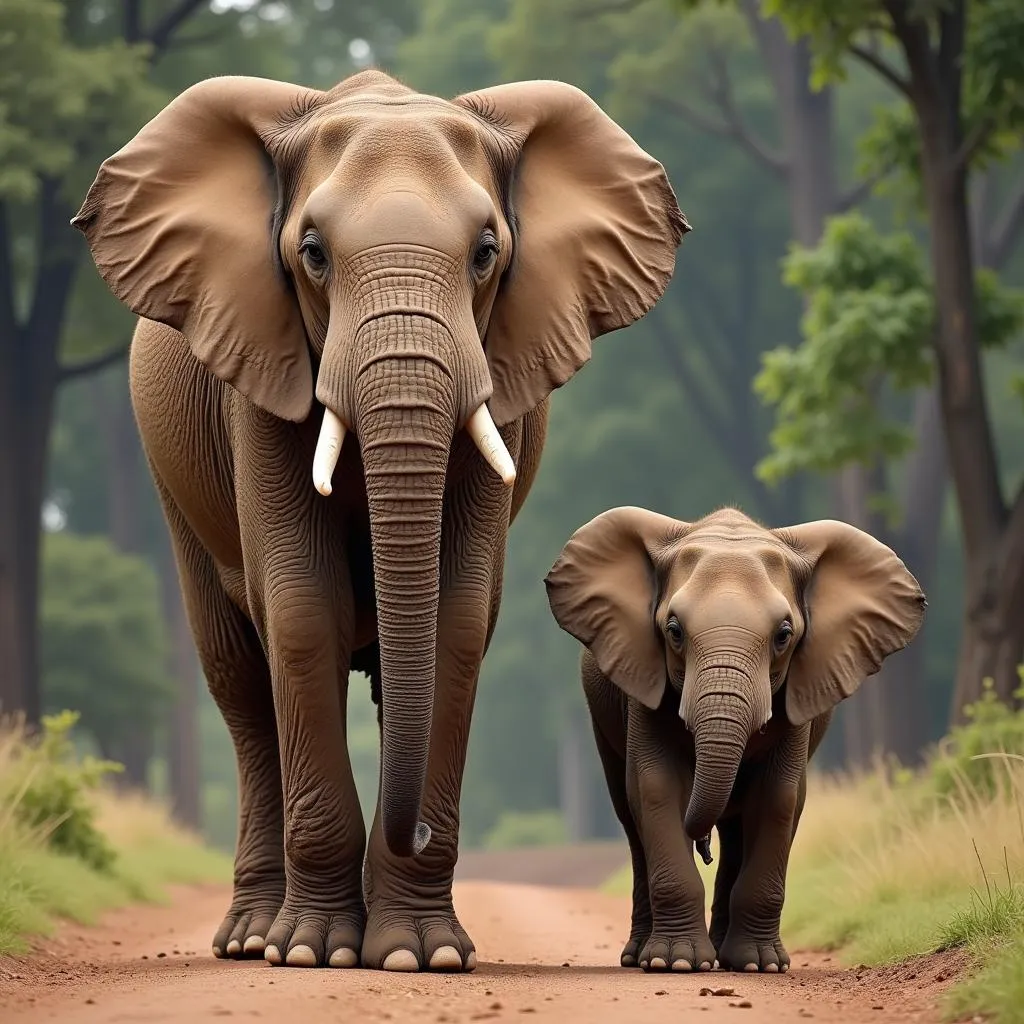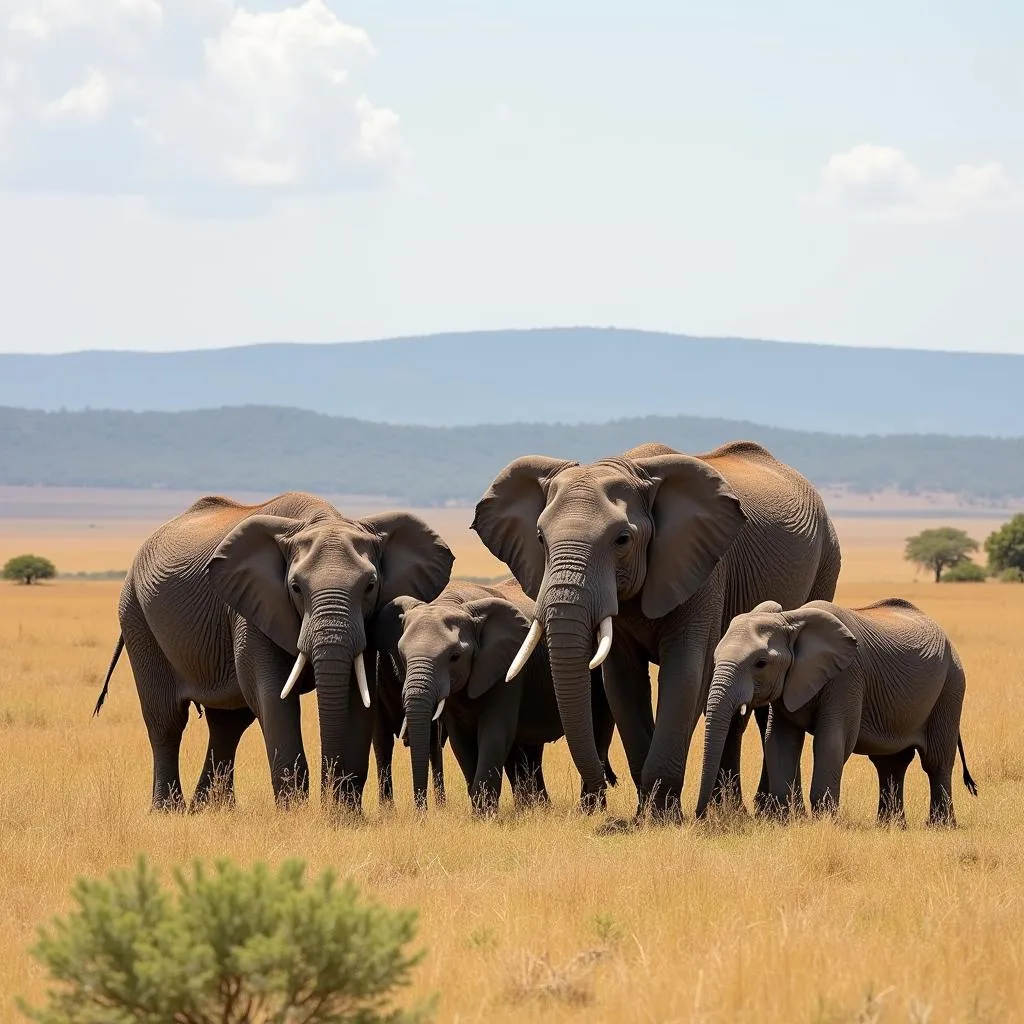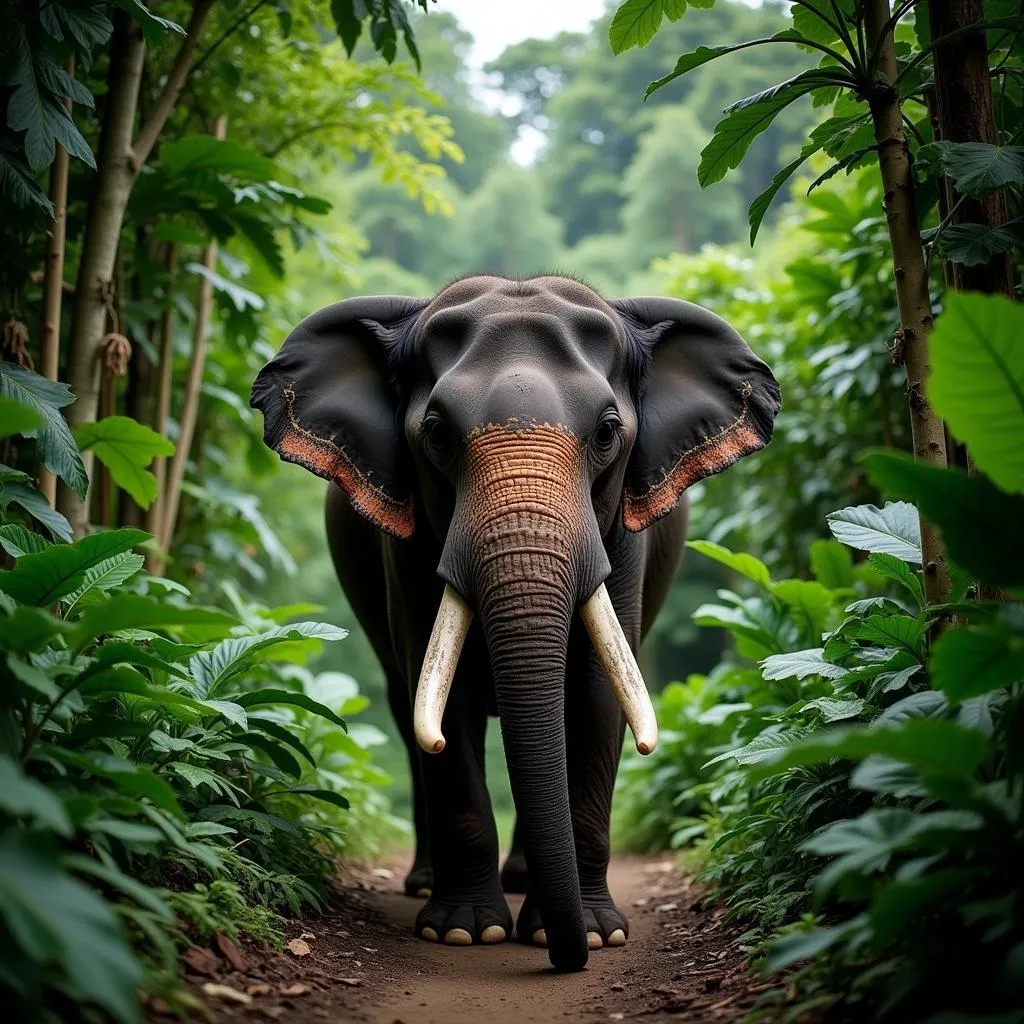African and Asian Elephant Pictures: A Majestic Comparison
Elephants, the largest land mammals on Earth, captivate our imagination with their immense size, intelligence, and complex social structures. When we think of elephants, African and Asian elephants are the two species that immediately come to mind. While they share certain similarities, their distinct features make comparing African And Asian Elephant Pictures a fascinating exploration.
 African and Asian Elephants Standing Side by Side
African and Asian Elephants Standing Side by Side
Distinguishing Features: A Visual Guide
African Elephants:
- Larger Size: African elephants are the largest of the two, with males reaching up to 13 feet in height and weighing up to 6 tons.
- Large, Fan-Shaped Ears: Their ears are a prominent feature, extending down past their shoulders and resembling the shape of the African continent.
- Concave Back: African elephants have a concave back, dipping down in the middle.
- Two Finger-Like Tips on Trunk: Their trunks, used for a variety of tasks like drinking, breathing, and communication, end in two finger-like tips.
- Both Males and Females Have Tusks: A key characteristic is that both male and female African elephants possess tusks, which are elongated incisor teeth.
Asian Elephants:
- Smaller Size: Asian elephants are smaller than their African counterparts, with males typically reaching up to 11 feet in height and weighing around 5 tons.
- Smaller, Rounded Ears: Their ears are smaller and rounder compared to African elephants.
- Convex or Straight Back: Asian elephants have a convex or straight back.
- One Finger-Like Tip on Trunk: Their trunks have only one finger-like tip, which they use for grasping objects.
- Only Males Have Tusks: In Asian elephants, only the males typically have tusks, and females rarely develop them.
 African Elephant Family in Savannah
African Elephant Family in Savannah
Habitat and Distribution
Pictures of African and Asian elephants often depict the contrasting landscapes they inhabit.
- African Elephants: African elephants roam the savannas, forests, and deserts of sub-Saharan Africa.
- Asian Elephants: Asian elephants are found in a variety of habitats across South and Southeast Asia, including forests, grasslands, and scrublands.
Conservation Status
Both African and Asian elephants face threats to their survival.
- African Elephants: Listed as “Vulnerable” by the International Union for Conservation of Nature (IUCN), African elephants are primarily threatened by habitat loss due to human expansion and poaching for their ivory.
- Asian Elephants: Classified as “Endangered” by the IUCN, Asian elephants face similar threats of habitat loss and poaching, as well as human-elephant conflict.
 Asian Elephant in a Lush Rainforest
Asian Elephant in a Lush Rainforest
The Importance of Pictures
Pictures of African and Asian elephants play a crucial role in raising awareness about these magnificent creatures and the challenges they face.
- Educational Value: Pictures provide a visual understanding of the differences between the two species and their unique features.
- Conservation Advocacy: Images of elephants in their natural habitats can inspire people to support conservation efforts.
- Connecting with Nature: Elephant pictures evoke emotions of wonder and appreciation for the beauty and diversity of the natural world.
Responsible Elephant Tourism
When viewing African and Asian elephant pictures, it’s important to be mindful of the source and the ethical treatment of the animals.
- Support Ethical Sanctuaries: Choose to visit or support sanctuaries and organizations that prioritize the well-being of elephants and do not exploit them for entertainment.
- Avoid Riding Elephants: Elephant riding is cruel and can cause long-term physical and psychological harm to the animals.
- Be a Responsible Tourist: Respect elephants’ space and avoid behaviors that may stress or disturb them.
Conclusion
African and Asian elephant pictures offer a glimpse into the lives of these incredible animals. By appreciating their differences, understanding their conservation challenges, and supporting ethical tourism practices, we can help ensure that future generations can continue to marvel at these majestic creatures.


